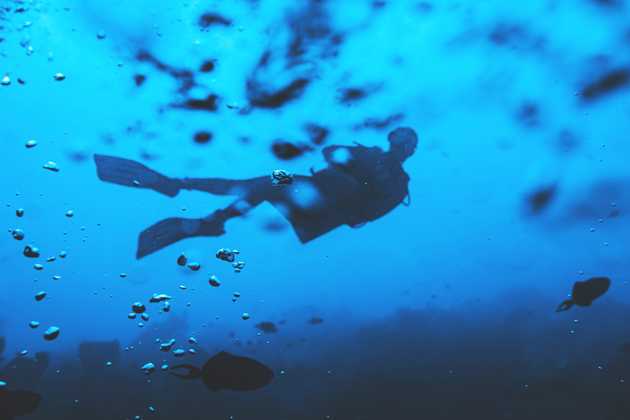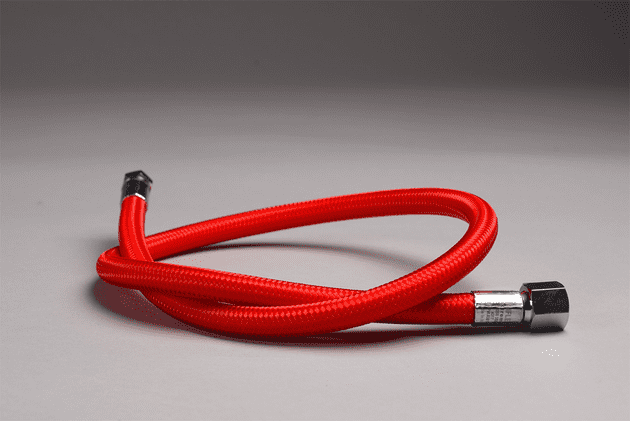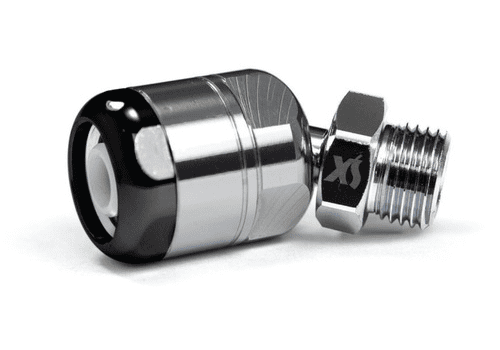Why does my jaw feel sore or fatigued after diving?
One common complaint of (beginning) divers is a dull pain, soreness, or fatigue of the jaw muscles at the end of a dive. When I first started scuba diving, I’d often surface with a painful face and a throbbing headache. So I did some research: what causes this jaw pain when diving? And how can I fix it?
The most common cause for a painful jaw after diving is clenching your mouthpiece unnecessarily hard during a dive. Manufacturers design regulator mouthpieces to stay in the mouth without biting down hard. Yet some divers may find themselves clenching throughout the dive. Common reasons include being tense, poor mouthpiece fit, or the position of your regulator hose. Let’s look at each of these and consider solutions for a pain-free dive.Reduce nervousness, anxiety, and stress while diving.

It is normal to experience nervousness, anxiety, or stress underwater. When you’re not at ease, it’s common to tense your muscles, including those in your face. This can be even worse when diving in cold water.
At first, I wasn’t aware that I was doing this myself. When I first had my regulator serviced, they told me I had chewed halfway through the mouthpiece!
To battle this tensing of muscles while diving, consider two different aspects. First, be aware of any mental discomfort, causing you to be tense. Make sure you are diving well within your comfort zone. Try to relax and get more experience to reduce nervousness. Be aware of any anxieties and try to let them go, so you can enjoy your dive.
And second, check for any issue causing physical discomfort that may make it harder to relax. Make sure you are wearing enough exposure protection so you do not get cold. Do not overexert yourself, for example by swimming into currents. Make sure your wetsuit and gear fit well. Adjust your gear for a proper fit and become neutrally buoyant.
Get a mouthpiece that fits you.

Manufacturers design mouthpieces as a one-size-fits-all product. This means they will fit the average mouth, but it does not mean they will fit well for you.
When I chewed through my first mouthpiece, I took that opportunity to do my research and explore the alternatives.
There are many mouthpieces available. Since most of them are inexpensive, you can try several without breaking the bank. I ended up switching to an Aqualung Comfo-Bite mouthpiece. It has a small bridge on the roof of your mouth, keeping the regulator firmly in place.
Another, slightly pricier solution is using a moldable mouthpiece, for example the X-type model from Seacure or the moldable mouthpiece from Edge. You can soak them in hot water and mold them to your teeth. This allows them to go further back into your mouth. This gives the mouthpiece more support, and you’ll need less force to keep it in place.
How do I replace the mouthpiece?
It is very easy to replace the mouthpiece on a regulator. You can do it in a few minutes, even on your rental gear on an exotic dive trip. Bring your preferred mouthpiece, at least two cable ties, and scissors or small pliers.
To replace a mouthpiece, carefully cut the cable tie that holds it in place and slide it off the second stage. Then slide on the new mouthpiece and secure it with another cable tie. Put the original mouthpiece back at the end of your trip.
Your dive operator can do this for you too, so let them know you want to use your own mouthpiece.
If you’ll be doing this more often, please consider using a reusable mouthpiece clamp. This will help reduce the plastic waste created by having to cut each cable tie. If possible, suggest these clamps to your dive operator too.
Get the right regulator hose.

You’re calm and confident in the water, your mouthpiece is fitting fine, so why are you still biting down hard? Most likely, the regulator is pushing or pulling at your second stage, causing you to hold on tighter. Besides a sore jaw, this problem could cause strain on your neck.
If you’re experiencing a push or pull from your hose on your second stage, there are three potential causes. It can be your tank positioning, the hose material, or the length of the hose itself.
Move your tank higher.
On top of clenching your teeth, does it seem as if you cannot freely move your head? Does the hose pull your head to your right? If your cylinder is riding too low on your back, your hose will be too short and will pull on your second stage.
When I bought my regulator set, this was the case for me. With a short hose, I felt my mouthpiece being pulled from my mouth, and I wasn’t able to look around comfortably. I believed that the hose was way too short, but it turned out I wasn’t aligning my tank properly.
Position the tank as high as possible on your back, but not so high that you’ll hit your head on the tank when you raise it. As a starting point, align the top of your BCD’s fabric with the top of your tank valve. Make adjustments after each dive until you are comfortable.
With your tank at the proper height, the hose should be long enough to reach your mouth without straining.
Flex your hoses.
Another cause of strain on your second stage is not caused by the position of your hose, but by its material. Some hoses are stiffer than others, especially ones that are made of rubber. If you’re experiencing this issue, you may want to switch to a flex hose.
Flex hoses, instead of rubber, are made of a polyurethane inner tube. This tube is surrounded by double braided nylon, adding an extra layer of protection. These hoses are lighter and more flexible, causing less strain on the second stage.
When flex hoses were first introduced, they got a poor reputation, as some brands had deteriorating inner tubes. But this is no longer the case, and reputable brands now sell top quality, well-tested flex hose.
Consider different hose lengths.
If you think the strain on your regulator is not because of the inflexible material, the problem could be its length.
Low pressure hoses are available in many sizes. The standard size of the hose of your primary second stage is 28 inches (71 cm) or 30 inches (75 cm). Just as with mouthpieces, these are the ‘average’ sizes, but may not be the best length for your setup. My recommendation is to visit your local dive shop for advice.
Install a swivel.

If the other steps don’t help, another solution is to install a swivel adapter on your second stage. A swivel is a ball-joint that you can install between your second stage and hose, or that comes as part of the hose itself. This increases the range of motion of the second stage.
I don’t prefer this option, because it adds another vulnerability to your equipment. But some divers swear by it. I’ll leave that up to you to decide!
Note that there are also first stages that have what’s called a ‘swivel turret’. A swivel turret is a freely rotating cylindrical portion of the first stage, in which the low pressure ports are placed. This reduces the pulling or pushing of the hose on your second stage, as the hose can rotate around the regulator.
If nothing helps.
The advice in this article relates to diving practices and diving equipment. If you cannot resolve your jaw pain with these tips, there might be an underlying medical issue. Speak to your doctor or dentist if the problem persists.